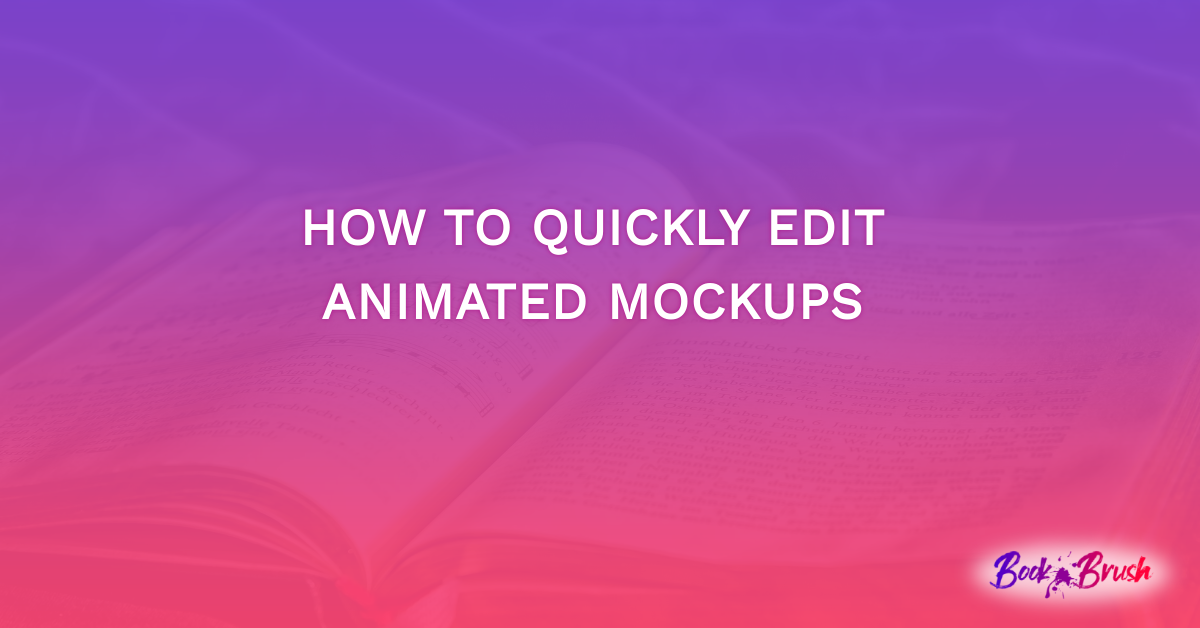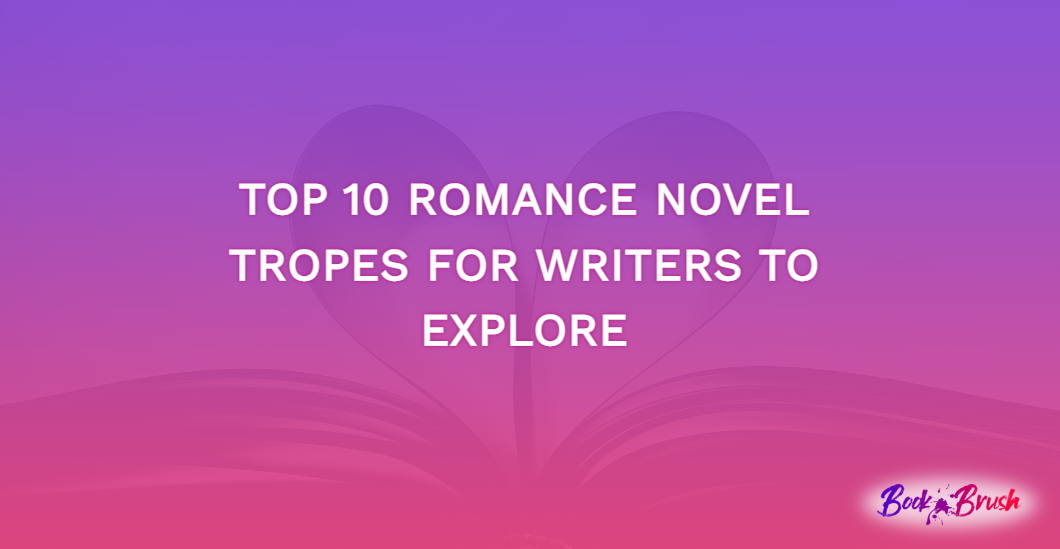One of the particular problems in the indie author world is that there are so many moving parts to manage: not just the writing, but the edits, the cover art, the advertising, the bookkeeping, the multi-author projects, the social media posts, the audiobooks, the translations… Any and all of these can easily consume your available brain space—or, through the sheer number of tasks, exhaust you before you’ve even started one of them.
Even worse? Too often, we spend the time, the effort, the blood, sweat, and tears, without first figuring out where we want to end up.
Discover Your Own “Ideal”
My guess is that you’re thinking, “I know exactly where I want to end up.”
Just for the sake of argument, though, take a few minutes to write down the aspects of your ideal day:
- When you wake up in the day, what you eat for a first meal, any morning rituals such as exercise, checking emails, reading or listening to the news, prayer/meditation, etc
- What you’re wearing
- Where you’re living
- Who you’re living with and who you socialize with
- The usual cadence of your days across weekdays, weekends, months, etc
- The type of writing you’re doing and how long you expect each project to take, along with whether you’re working on one project at a time, or multiple projects
- Income from your writing projects vs from other sources
- Accolades you have won for your writing
- Any hobbies you have taken up
- What aspects of the business you handle on your own versus having others handle them
Trust me, I have a good reason for asking. Not only have I burned myself out by trying to have an author career I didn’t actually want, and not only have I seen other authors do the same, I have seen many “successful” people across industries come to the dawning realization that they wasted years–or even decades–trying to achieve something that didn’t make them happy.
You really don’t want to end up there.
The reason I’ve asked about your day is twofold. First of all, you obviously want to do regular checks to make sure you’re on the correct path…
But also, and perhaps more importantly, you might be closer to your dream than you think.
Is this when we look at numbers? you ask, and the answer is “not quite yet.” I know, I know, I’m the Author Numbers Lady, but the secret of numbers is that you don’t use them until pretty late in the game.
Onwards!
Making It Specific
Let’s look at which components of your business exist:
- Content creation—books need to get written
- Research—research on genres and tropes, writing courses, learning about running a business, marketing tutorials, etc. (you made decide that some of these tasks go in Administration instead—all that matters is that you know the tasks exist and you’ve noted them down somewhere!)
- Administration—books need to get somewhere that people can buy them, technical issues, formatting, bank accounts, business registration, taxes, managing contractors, etc. All of the things you have to do in order to keep the business running.
- Marketing—covers, blurbs, advertising, social media, and all other things that get your book in front of your target readers
While picturing your ideal career, write out the individual tasks that must be completed in each column (content creation, research, administration, and marketing). As you write down each task, ask yourself if it is essential…and if you need to be the one who does it.
As a note, allow this part of the process to influence and change your vision of an ideal career. Often, your kneejerk reaction will be to insist that you must be the one who completes a certain task—but, just as often, this is not the case, and sometimes, the task is not even necessary. Think creatively, ask yourself if there’s a way that someone else could do any of the given tasks, and don’t worry too much right now about the cost of outsourcing them.
Now you have something quantifiable. That, you can work with. Your solutions will be unique to you and your business, but the first step is always quantifying the problem–in this case, the difference between your ideal career, and where you are now.
Where Are You Now?
Now that you know where you’re going, you can begin to identify the steps that will lead you to each checkpoint between here and there.
So we’re finally going to get into the numbers, using some of mine as an example. In my ideal career, I would spend about 2-4 hours per work day on writing, taking as much time as necessary to make each book the best version of itself. I would also do some nonfiction writing, teaching, and consulting about statistics for ScribeCount, would like an hour or so each day for reading, and regular time set aside for going down random research rabbit holes, dreaming up new series that might or might not ever see the light of day, etc.
We’ll focus just on my fiction writing. Right now, my big goal is for a six figure year: $100,000 in royalties, or around $8,335 per month, and, again, 2-4 hours writing per work day.
Last year, after clawing my way back from burnout, these were my numbers:
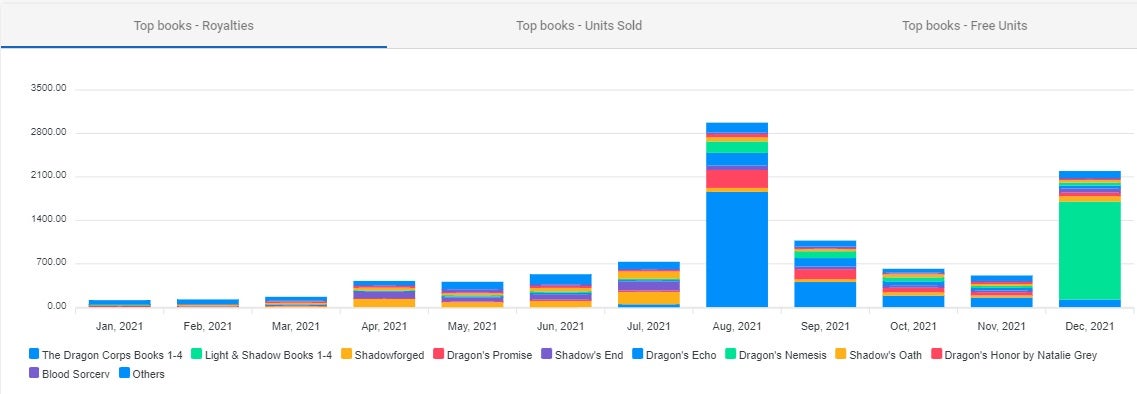
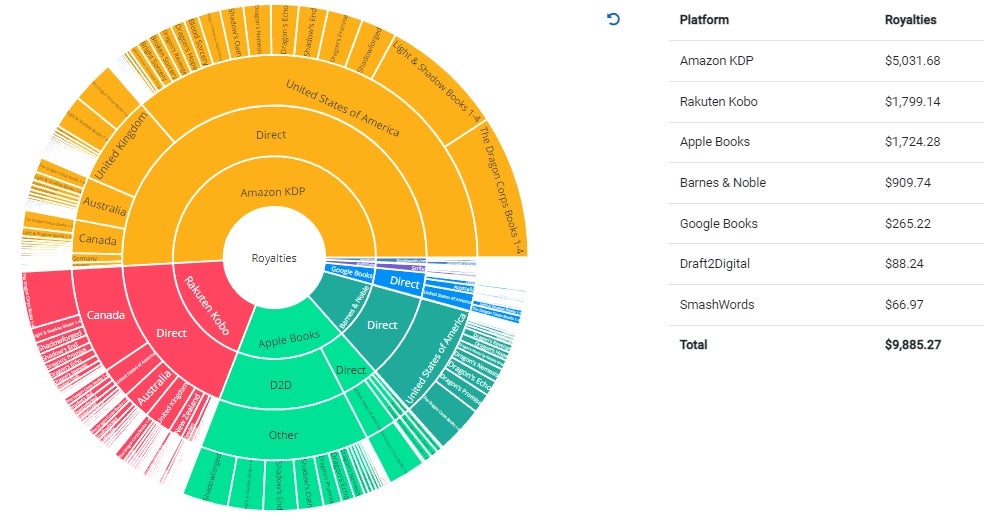
Establish Checkpoints
Obviously, I have a ways to go before I hit a six-figure year, so my next step would be to determine what my checkpoints are. In this case, I’m going to set them as follows:
- $20,000 year as my 2022 goal (roughly double last year’s numbers)
- $40,000 for 2023 (doubling again)
- $75,000 for 2025 (note that this is a 2 year jump; past the halfway mark and still climbing)
- $100,000 year for 2027 (the end goal)
There we have it: a tentative 5 year trajectory to $100,000 per year.
So…how do I get there?
Look at the Data
We’ve all been here, and we know we’re going for some combination of more books, and better royalties per book. In order to figure out where to focus my time, I want to look at the series that is giving me the most bang for my buck, so let’s look back at last year’s royalties by series:
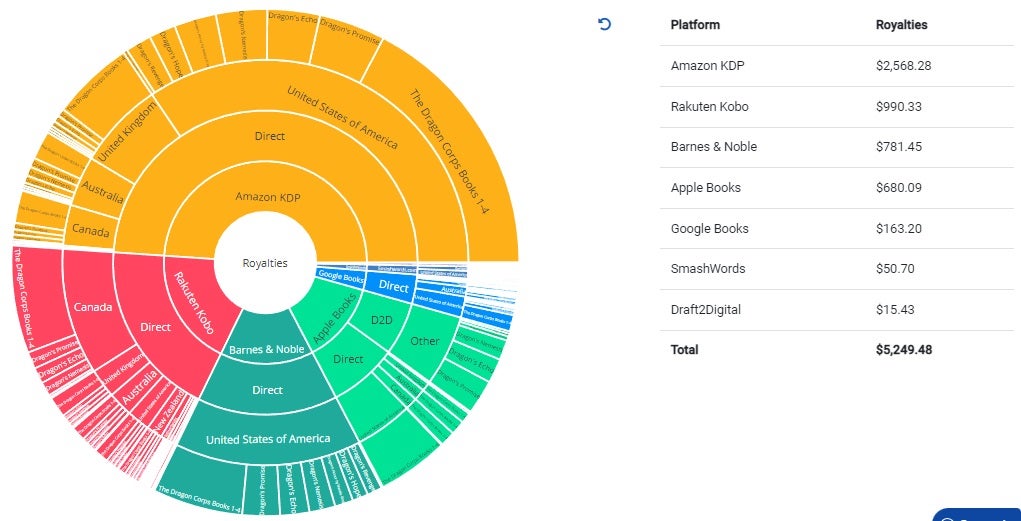
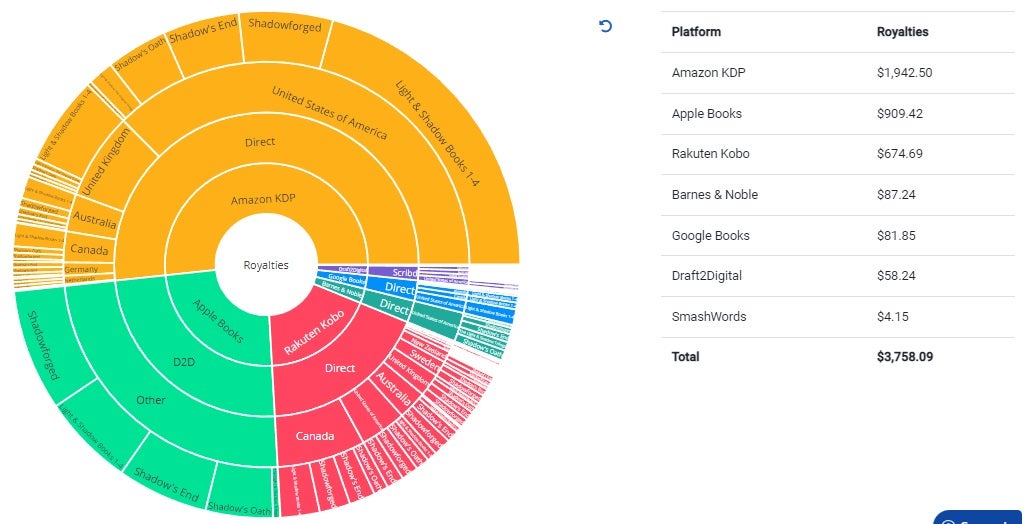
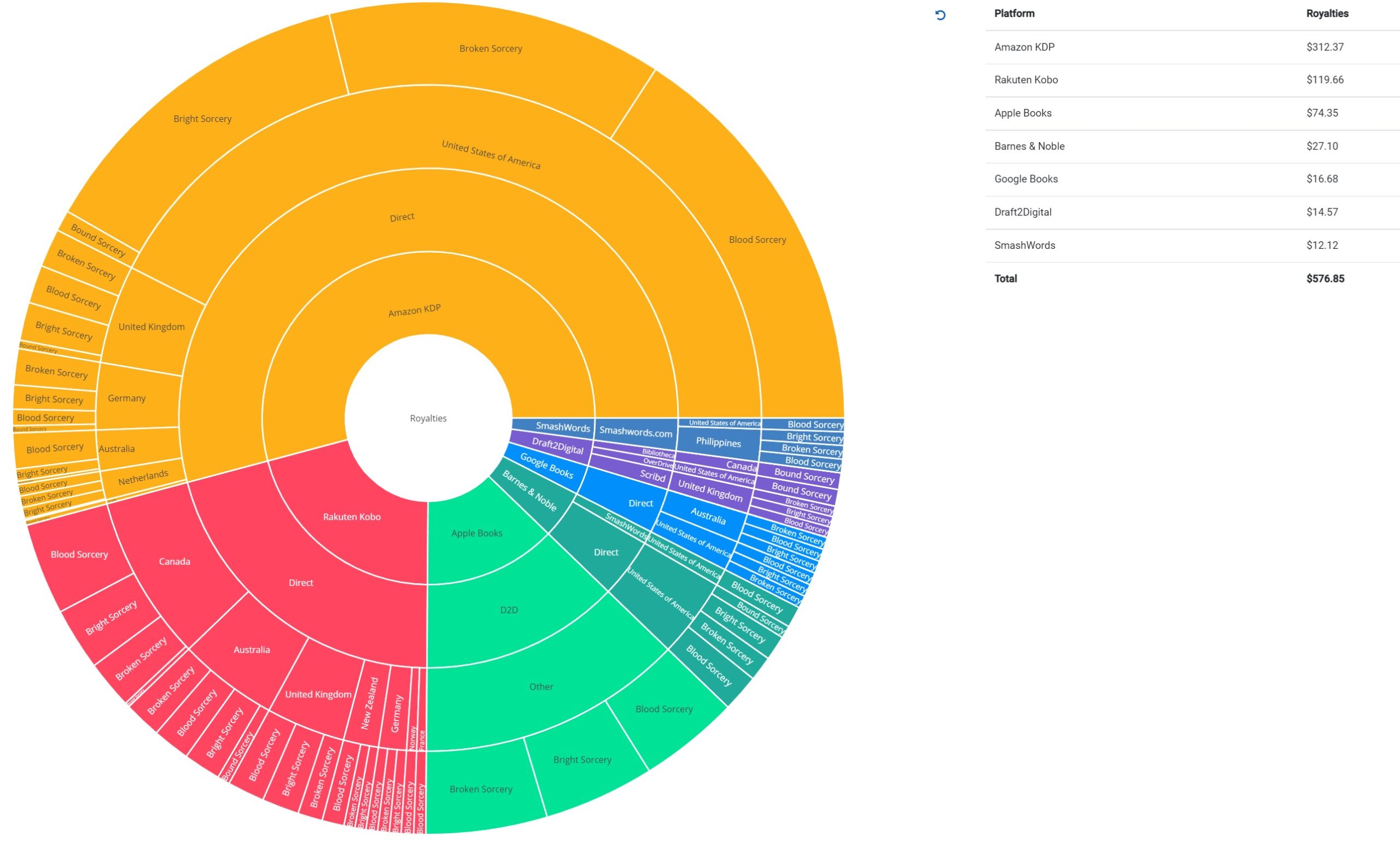
How do we evaluate these numbers?
- Identify highest selling books. Box sets are my top sellers, which is great, as it doesn’t require any new books to get written! Step 1 this year was to make a box set for Shadows of Magic, my lowest-selling series, and that has worked very well.
- Evaluate per-book income by series. You’ll notice that Light & Shadow earned less than The Dragon Corps, but in terms of sales by individual book, Light & Shadow’s three paid titles outperformed The Dragon Corps’ six paid titles, at $1253 compared to $875
- Evaluate sell-through. Light & Shadow’s 3434 free units translated into 194 units of Book 2, while The Dragon Corps’ 4869 free units translated into 96 units of Book 2. Light & Shadow was almost 3 times as likely to sell through!
Key takeaway? Although The Dragon Corps generated more royalties, the Light & Shadow series looks to be a better bet in terms of return per book, both in royalties and in advertising the permafree first book in the series.
Problem Solve Creatively
Now that I can see the numbers, I can brainstorm more effectively. As you can see, we clearly have options, many of which are not mutually exclusive.
- Advertise The Dragon Corps more on Barnes & Noble and Kobo
- Advertise Light & Shadow more on Apple
- Review keywords and blurbs to increase potential sell through
- Write another Light & Shadow book
- Try to do more newsletter swaps with authors who write in epic fantasy
- Write more epic fantasy that isn’t Light & Shadow
- Look at new ways to sell books
Evaluate Progress
So far, this year my royalties are here:
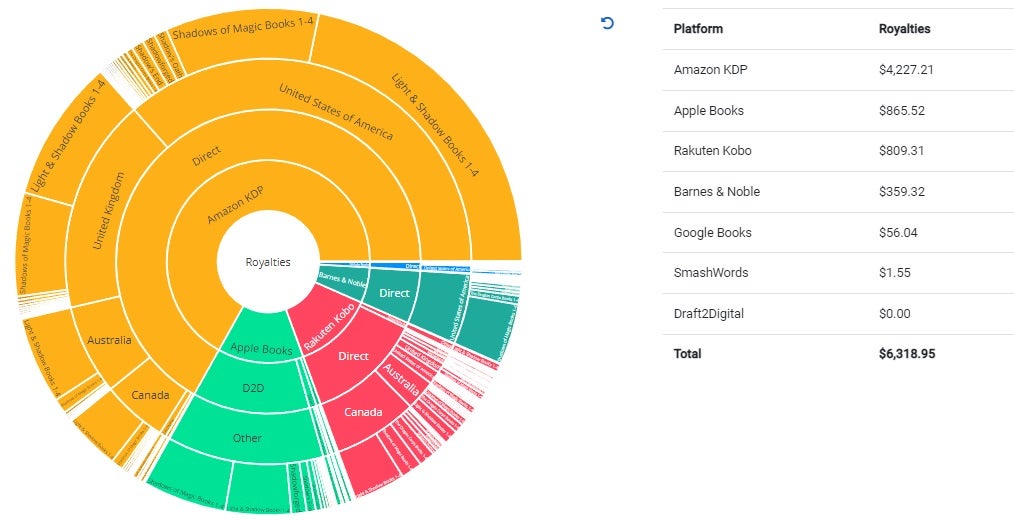
Aaaaand this happened:
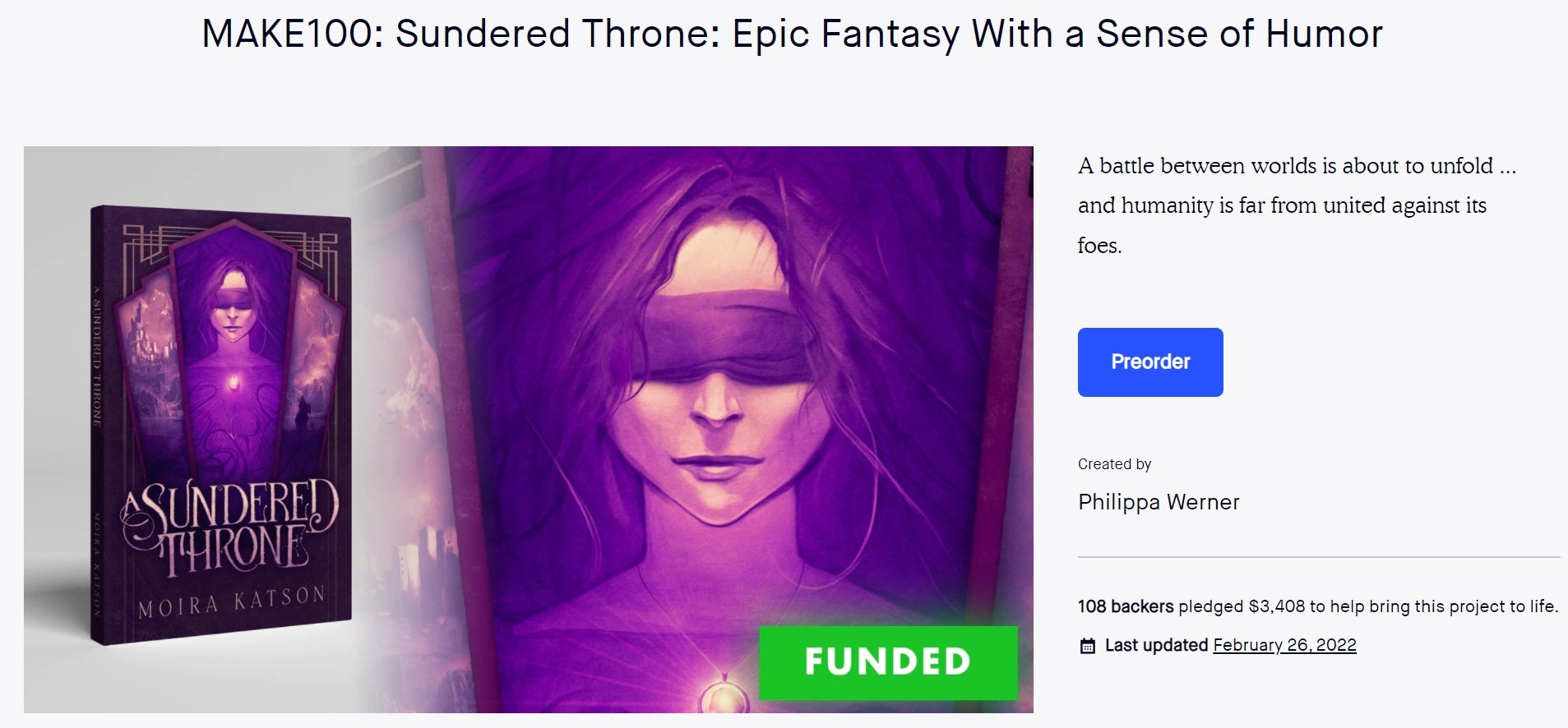
We’re already at $9726 for the year, and it’s only March 1.
Why? Because I looked at what was working and did more of it. And, by the way, I focused on the books I wanted to write, and wrote for just about my ideal number of hours per day.
So far, 2022 is going nicely to plan!
What If the Plan Doesn’t Work?
What if my royalties had gone downhill at high speed?
Because that happens. Believe me, it happens to us all. A series doesn’t hit right, an Amazon category disappears… You never know what’s going to happen.
That said, now you know how to look at what happened, and how to track your progress against where you actually want to be.

Article by Philippa Werner
Philippa Werner really tried to have a nice, sensible career, but couldn’t keep herself from writing Science Fiction and Fantasy under pen names Moira Katson and Natalie Grey. In 2015, she gave up on the pretense of being sensible and has been ghostwriting full time ever since, producing 50+ novels, including several USA Today bestsellers. As the public face of ScribeCount, she makes use of her sensible degree to help other authors understand their data.
Questions? Find her at philippa.werner@scribecount.com


